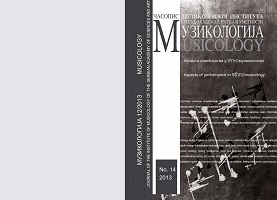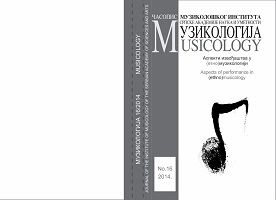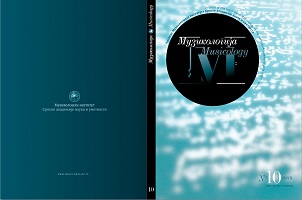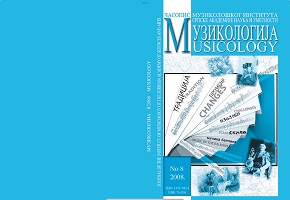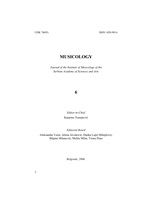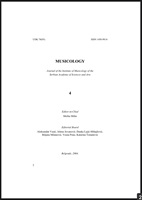Author(s): Aleksandar Vasić / Language(s): Serbian
Issue: 4/2004
It is worth noting that the important journal of the history of Serbian literature and music, the Serbian Literary Magazine (1901 - 1914, 1920- 1941), became more Yugoslav-oriented within a relatively short period following its inception. From its early beginning to 1906, the Magazine’s musical critics did not actively express its Yugoslav ideology. But from 1907 there was an increase of interest in both the music and the musicians from Croatia and Slovenia. In 1911 the Croatian Opera spent almost two weeks in Belgrade performing; the composer and musicologist, Miloje Milojević, began to develop the idea of union with Slavs from the South in a critical analysis he rendered of their performance. Until the end of the first/old series, SLM highlighted a noticeable number of texts about Croatians and Slovenians: critical reviews of Croatian musical books, concerts of Slovenian artists in Belgrade, score editions of Slovenian music, performances of instrument soloists from Zagreb in Belgrade - as well as notes about the musical work of Croatian Academy (Yugoslav Academy of Sciences and Arts, Zagreb). Echoes of rare tours of Serbian musicians in South Slavs cultural centers did not go unheard, either. In the older series of the journal, lasting and two-fold relations had already begun to lean towards Yugoslav ideology. From one side, even before World War I, Yugoslav ideology in the Magazine was accepted as a program objective of Serbian political and cultural elite. On the other, the journal does not appear to have negotiated any of its aesthetic criterion when estimating musical events that came from Zagreb and Ljubljana to Belgrade - at least not “in the name of Yugoslav ideology”. In later series of SLM, the Yugoslav platform was being represented as official ideological statehood of newly created Kingdoms of Serbs, Croats and Slovenians (1918), i.e., the Kingdom of Yugoslavia (1929). At that time, the Magazine had occa¬sional literary7 cooperation from Croatian musical writers such as Lujo Šafranek-Kavić. Božidar Širola and Antun Dobronie. Their articles described activities of the Croatian National Theatre and evaluated new works of Croatian composers. But they were not at all remiss about acknowledging great masterpieces of European music being performed in Zagreb in their day, either. The works of Claude Debussy, Pelleas et Melisande; Ludwig van Beethoven, Missa solemnis; Richard Wagner, Lohengrin were also followed through reviews, albeit within a curious Croatian-paradigm of musical history which included musical and dramatic theatre from Ljubljana, Zagreb, Split, Sarajevo, Skoplje, Osijek. In other words, they seem to have been aware of the cultural differences without ignoring what from them were shared in common. Before the First World War, SLM classified Bulgarians together with Serbs, Croats and Slovenians, as the future “Yugoslav nation”. When the reality of politics clouded their vision, the Magazine’s musical critics nevertheless pursued a troupe of Bulgarian performers to visit Belgrade, and thus added to their repertoire from works of Bulgarian composers. Among musical contributors to the journal were the eminently known “Yugo¬slavs”, Dr Miloje Milojević (1884- 1946) and Dr Viktor Novak (1889-1977). From Croatia and Slovenia, musicians Juro Tkalčić and Ciril Ličar, Milojević spoke about “our national artists” and praised musicians who, in their program, included com¬positions of “all Yugoslav nations”. Dr Novak demanded that Belgrade become the musical capital of South Slavs, and invited Belgrade Opera to show on its scene the best Serbian, Croatian and Slovenian operas and ballets. From its onset, the Kingdom of Yugoslavia was burdened by heavy political and economical problems. That would also lead to bitter dispute about Yugoslavian idealogy. Nevertheless, SLM did not renounce the system of its objectives and values upon which it was built. But there is one particular section where the Magazine’s inconsistency can be noticed - when seen from a Yugoslav dimension of the journal - is the necrology column. Magazine did not publish even one obituary7 of Croatian musicians, and wrote fragmentary7, unclear and unconvincing criterion about Slovenians. However, it would be neither appropriate, nor real, to interprete incompleteness of the Magazine’s musical necrological texts in purely ideological light. Namely, an insufficient number of musical contributors from all Yugoslav provinces - with the exception of Serbia - was probably the main reason for these omissions. After all, SLM was a literary7 journal and, as such, entertained numerous literary7 problems and questions. At some point, the editors must have agreed that the information in the field of musical posthumous articles was insufficient. The obvious absence of said would indicate that they did.
More...
